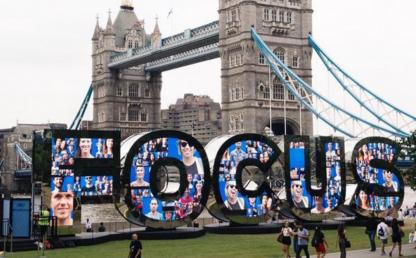What makes a successful brand activation?

Brand activation is a relatively new term that’s still making it rounds in the industry. With many definitions to describe the concept, in essence, Brand Activation is a means for brands to engage with consumers by tapping into consumers’ senses and emotions to generate interest and action.
To make a success out of a brand activation, here’s a few things that marketers must take into consideration when planning their campaign.
1) It’s about the experience that enables consumers to interact with the brand
The experience defines the success of a brand activation. To draw attention to the experience, it must captivate consumers and offer an opportunity to interact with the brand and/or its product to affirm its values and benefits.
Brand activation comes in many different forms. From experiential marketing, product sampling, event and sponsorship marketing, to name a few. Ultimately, the aim of every brand activation is to establish trust between the consumers and the brand, and eventually transform them into loyal customers and advocates.
For brands who are entering a market that is already saturated with competing products, the best way to establish its position is by letting their audience experience their product first. For a brand like ghd who has already created a cult of loyal fans amongst its Western consumers, the challenge was identifying a strategy on how to engage the local consumers in Hong Kong market.
By creating a premium styling truck experience, ghd offered an opportunity for their target consumers to test the product and experience the ghd brand. By creating a full brand experience that enabled consumers to realise the values & benefits of the ghd brand and its product, they were able to transform their audience into consumers and advocates of the brand, driving sales at designated stores and engagement on social media.

2) It’s the messaging that will leave consumers with a positive perception of the brand
The key to shifting consumers’ perceptions lies in the messaging and how it’s delivered. By digging deep into the core of the brand’s identity and presenting it in ways that consumers can relate to,the right messaging combined with the experience canhelp evoke the desired emotions that will leave a lasting impression on consumers.
The Economist who hit the right cords with their audience with an unconventional marketing campaign across Asia Pacific, brought their content to life by offering consumers delicious ice cream treats in the blistering summer heat. The twist – they’re laced with insects.
To ignite interest and spark conversations amongst their curious audience about the forces that drive our future, The Economist was able to use their content as a talking point to engage with their target consumers and influence their perception of the brand by showcasing the diversity of its content beyond politics, economics and finance.

3) It’s the amplification strategies that turns consumers into advocates of the brand
When consumers make a decision on a purchase, they place more weight on brands that have been recommended by their peers. So if a brand activation can leave a lasting impact on their consumers through experience, there’s a prettyhigh chance of that experience being shared to their networkby word of mouth or through social media platforms.
When Nutella toured across Hong Kong inviting consumers to try free Nutella treats, they announced the campaign on social media inviting people to follow the Nutella trike’s whereabouts. The fans who came took photos and shared their experience on Nutella’s post inspiring others on social media to join in on the fun and take part in the trike experience. In just one post, Nutella was able to generate engagement which surpassed expectations, with over 4,000 likes, 700+ comments with photo uploads, and 200+ shares.
The Bottom Line
Brand Activation is a strategic component of marketing that needs to be meticulously planned based on specific goals and objectives of the brands. To get through the clutter, marketers must develop standout campaigns by creating a more meaningful connection between consumers and the brands without compromising the opportunity to deliver favourable returns on investment.
 Insights
Insights

